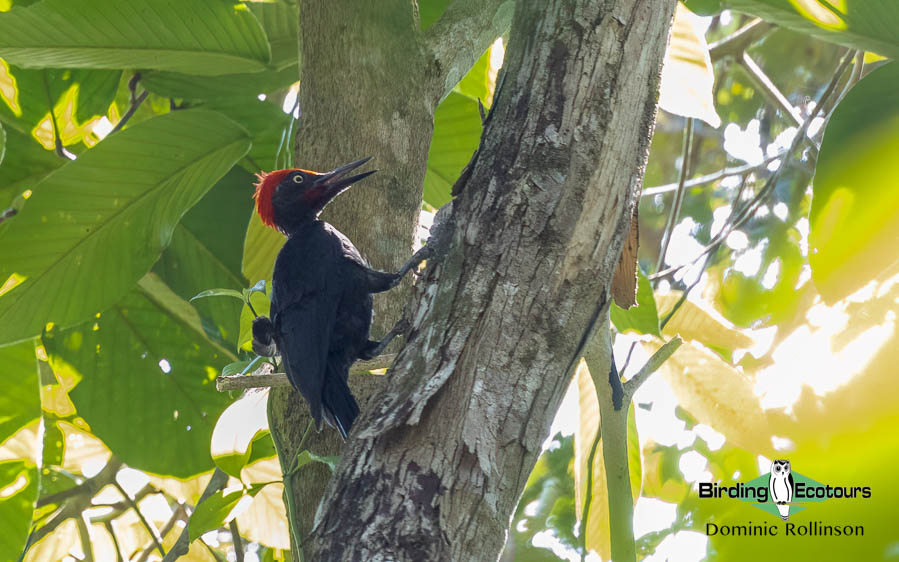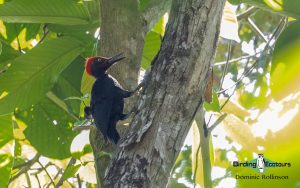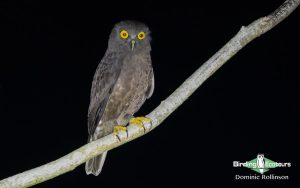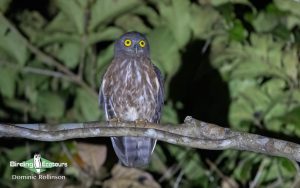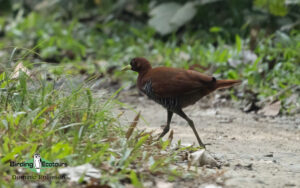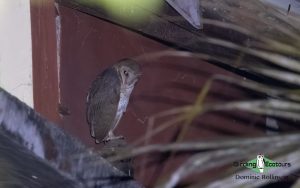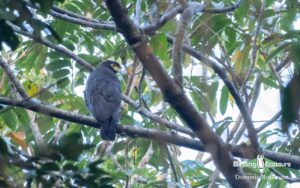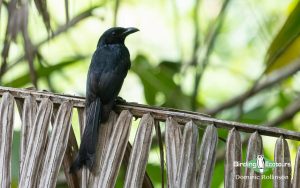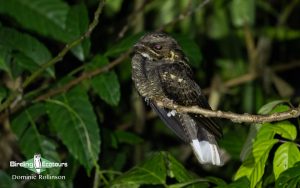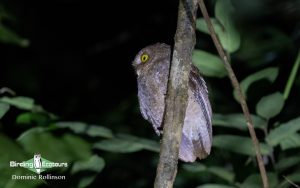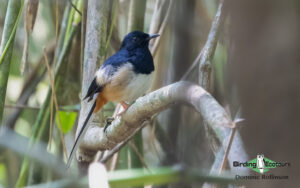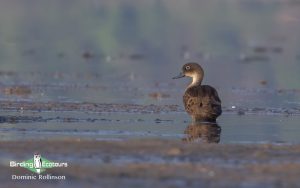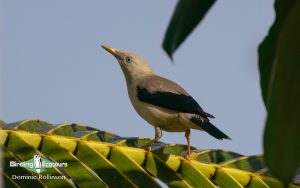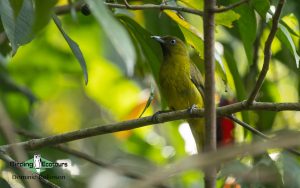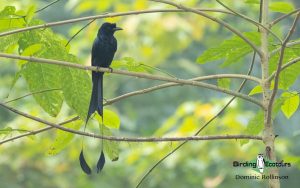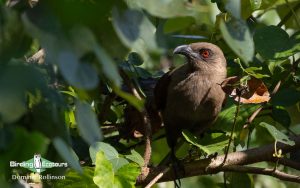Birding Tour India: Andaman Islands Endemics
Birding Tour India: Andaman Islands Endemics
January 2026/2027
This short (five day) birdwatching trip will focus on the endemic birds found on the Andaman Islands, part of the Andaman and Nicobar Islands archipelago. We will be based on South Andaman Island during the tour which is situated approximately 680 miles (1,100 kilometers) to the east of the Indian subcontinent. Although a union territory of and governed by India, the archipelago is actually geographically closer to Myanmar (formerly Burma), which is approximately 250 miles (400 kilometers) to the north and approximately c. 450 miles (700 kilometers) to the east. Sumatra (part of Indonesia) is approximately 300 miles (500 kilometers) to the south. The Andaman and Nicobar Islands are surrounded by the Bay of Bengal to the west and the Andaman Sea to the east.
We will look for the gorgeous endemic Andaman Woodpecker during this tour.
Due to the remote location and age of these islands a number of endemic birds have evolved here, and these are the main targets of the tour and will include Andaman Teal, Andaman Nightjar, Andaman Coucal, Andaman Wood Pigeon, Andaman Cuckoo-Dove, Andaman Green Pigeon, Andaman Crake, Andaman Serpent Eagle, Andaman Masked Owl, Andaman Scops Owl, Hume’s Boobook, Andaman Boobook, Andaman Woodpecker, Andaman Cuckooshrike, Andaman Drongo, Andaman Treepie, Andaman Bulbul, White-headed Starling, Andaman Shama, and Andaman Flowerpecker. Pristine forest still remains in some areas, and we will spend the majority of our time in these areas, such as Chidiya Tapu and Mount Manipur (Harriet) National Park, where the vast majority of our endemic target birds occur. We will also be sure to visit other habitats, such as the Sippighat swamps, Shoal Bay, and other locations where we will check waterbodies, swamps, mangrove forests, and mudflats for a wide assortment of birds.
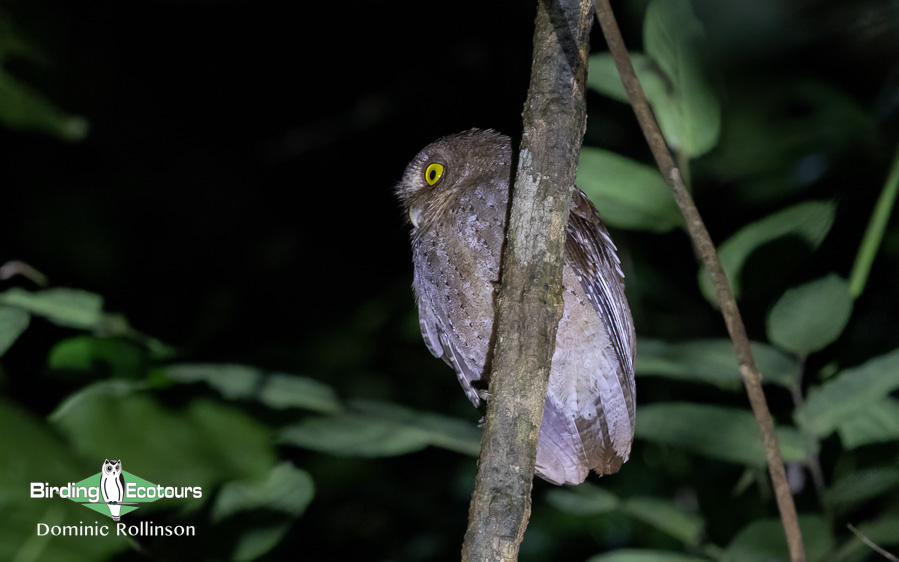
Other species we may see have distinct endemic subspecies that may warrant full species status in the future, such as Oriental Scops Owl, Crested Serpent Eagle, Collared Kingfisher, Ruddy Kingfisher, Long-tailed Parakeet, Black-naped Oriole, Scarlet Minivet, and Indian White-eye to name a few, and there is an interesting range of Southeast Asian species possible too, such as Violet Cuckoo, Greater Racket-tailed Drongo, and Red-breasted Parakeet, with the island having an Indo-Malayan birdlife.
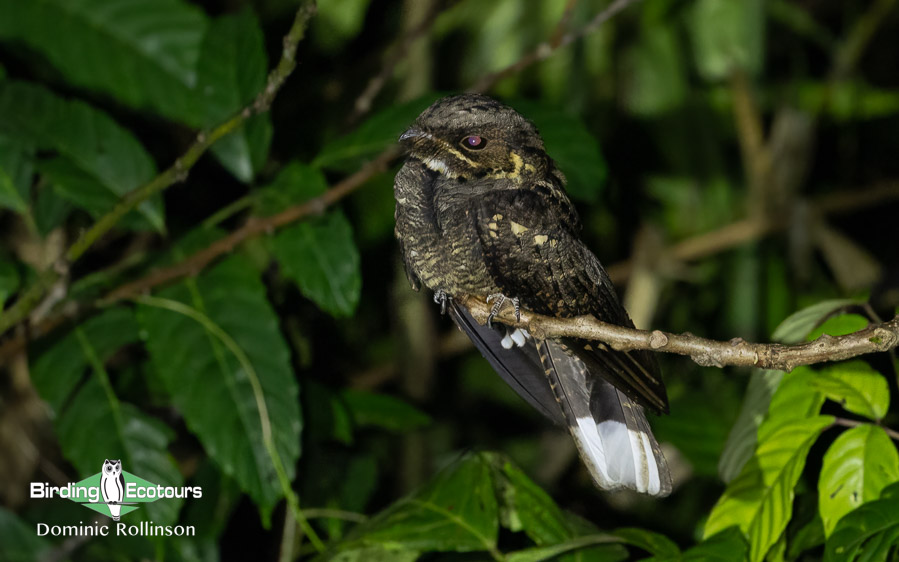
Itinerary (5 days/4 nights)
Day 1. Arrival in Port Blair
After your afternoon arrival in Port Blair, we commence our birding late in the afternoon, likely to the south of Port Blair, at Chidiya Tapu Biological Park, where we will target our first endemic birds of the tour, potentially Andaman Serpent Eagle, Andaman Flowerpecker, or perhaps the tricky Andaman Wood Pigeon. In the evening we will perhaps make a start on our nocturnal targets and hopefully add Hume’s Boobook, Andaman Scops Owl, or Andaman Nightjar. Then we will have a group welcome evening meal together and discuss our plans for the next few exciting and bird-filled days.
Overnight: Port Blair
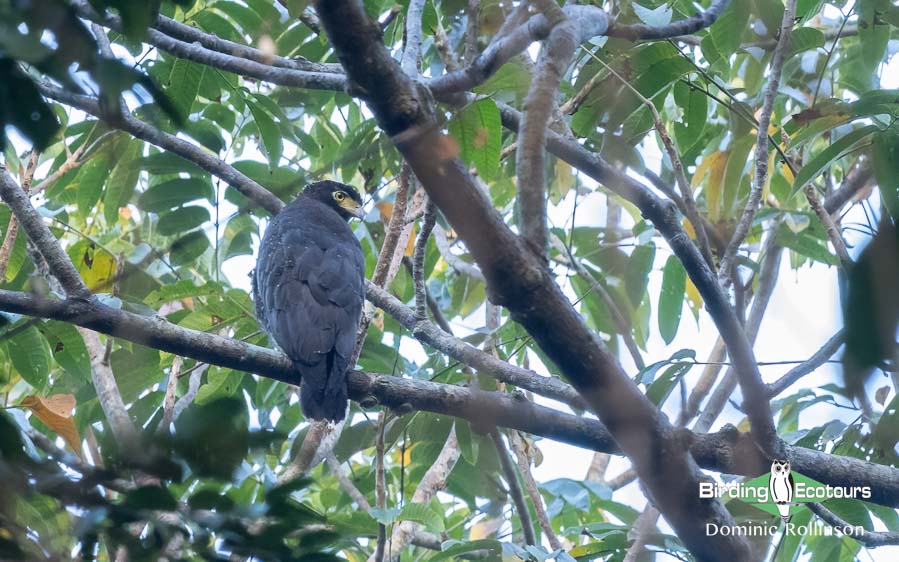
Days 2 – 4. Birding Port Blair, Sippighat, Chidiya Tapu, Kalatang, Shoal Bay, and Mount Manipur (Harriet) National Park
We will spend three full days (and three nights) visiting a range of pristine forested habitats such as Mount. Manipur (Harriet) and Chidiya Tapu, which each hold multiple endemics. We will also visit more open areas around Port Blair such as the Sippighat swamps and Garacharma wetland, where some time will be spent looking over mudflats for shorebirds and other wetland species, while Shoal Bay’s mangrove swamps will be birded for a different suite of species.
Birding in this part of the world often involves searching for mixed feeding flocks, or bird waves. These flocks find you just as often as you find them, and in the Andaman Islands, similar to our tours in Sri Lanka, Taiwan, Vietnam, and Borneo where we often also see this phenomenon, the bird waves can contain many endemic birds. Species we will look for in a bird wave in the Mount Manipur (Harriet) area include Andaman Drongo, White-headed Starling, Andaman Treepie, Andaman Flowerpecker, and Andaman Cuckooshrike, as well as plenty of other species such as Violet Cuckoo, Greater Racket-tailed Drongo, Scarlet Minivet, and Black-naped Monarch. Soaring over the forest the endemic Andaman Serpent Eagle can be found, with other possible endemics including Andaman Green Pigeon, Andaman Cuckoo-Dove, and Andaman Wood Pigeon. As with pigeons and doves across other parts of Asia a knowledge of their roost sites is usually invaluable in getting views of them, as they can be secretive.
Secretive in the extreme is the Andaman Crake. We hope to see this absolutely spectacular and tough forest-dwelling endemic during our time in suitable habitat. Another species possible skulking about on the forest floor is the Forest Wagtail, a nonbreeding winter visitor.
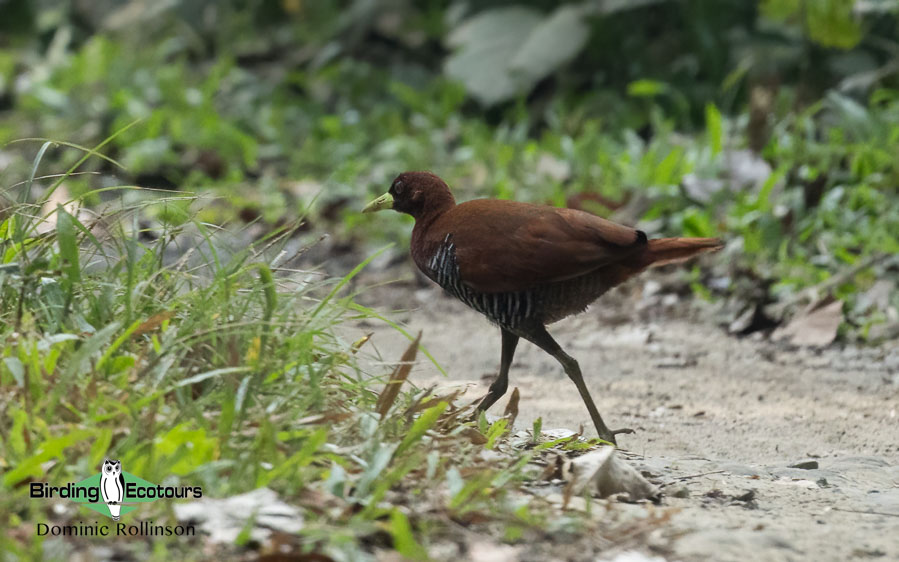
Night birding in these forests is a must as the archipelago is home to a large species diversity of nocturnal avian predators, and although we might be lucky enough to find one or two of our targets on day roosts, we will likely need to spend plenty of time searching at night for the likes of Andaman Masked Owl, Andaman Scops Owl, Andaman Boobook, Hume’s Boobook, and Andaman Nightjar, five species of endemic night birds! Furthermore, we should not neglect trying to find Oriental Scops Owl; the endemic subspecies (modestus) occurring in the Andamans could be elevated to full species status and called “Walden’s Scops Owl” in the future. So, it is definitely worth putting in the effort at night too. Luckily, it gets dark early, so often we can get a good owling session in before dinnertime!
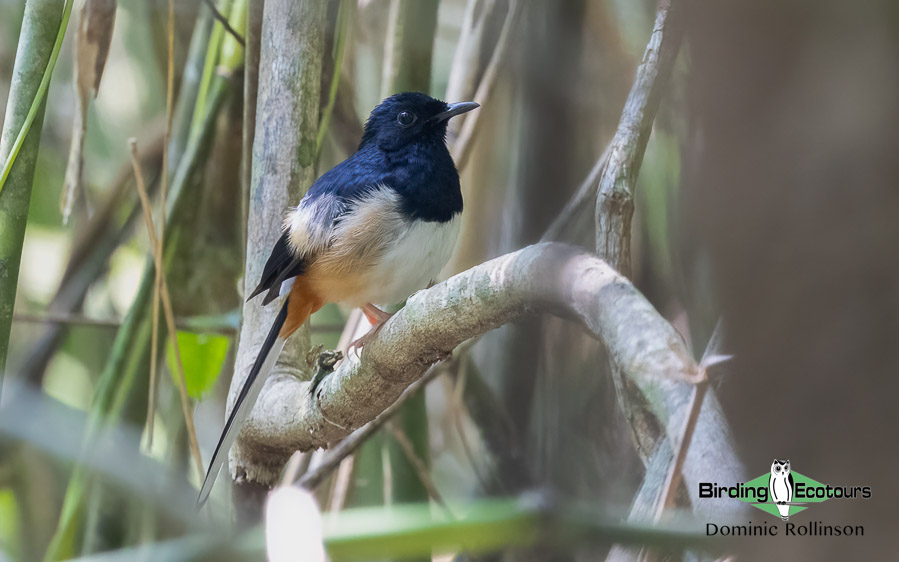
We will also spend time birding around the Kalatang area, and the forest here supports more of our endemic targets, with spectacular species such as Andaman Woodpecker – a large, all-black Dryocopus woodpecker with striking scarlet crown, crest, and malar stripe and pale eyes – found nearby. Additionally, we should see Andaman Coucal, Andaman Shama, Andaman Bulbul, and White-headed Starling. Other non-endemic species we might find here include Green Imperial Pigeon, Pied Imperial Pigeon, Black Baza, Chestnut-headed Bee-eater, Freckle-breasted Woodpecker, Common Hill Myna, Ornate Sunbird, and Asian Fairy-bluebird. Plume-toed Swiftlet and Brown-backed Needletail are usually seen whirling above the forest patches.
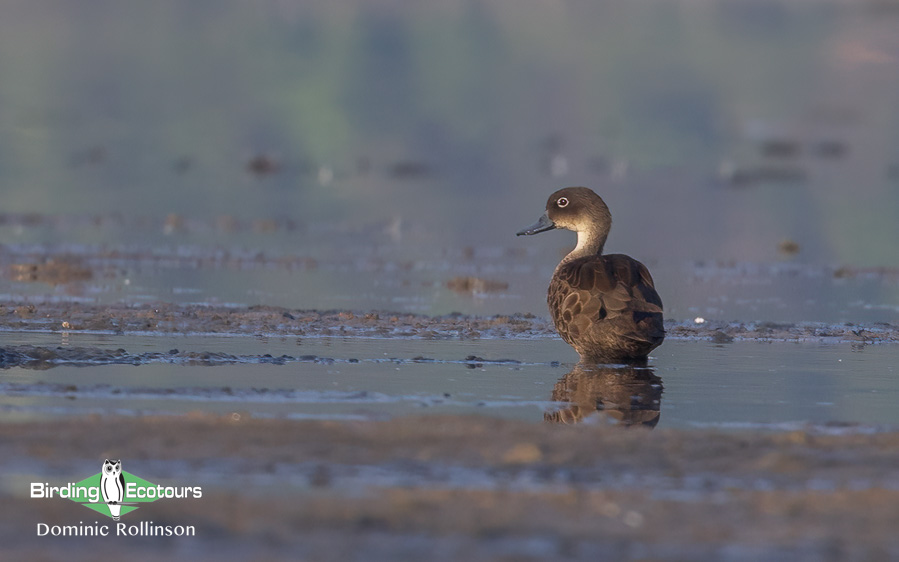
We will look for a range of widespread shorebirds from the East Asian-Australasian flyway, which could include Eurasian Curlew, Tibetan Sand Plover, Pacific Golden Plover, Pin-tailed Snipe, Red-necked Stint, and Long-toed Stint. In these open areas we will also keep a look out overhead for the large White-bellied Sea Eagle which is rather common on the island. Wintering Phylloscopus warblers here include Dusky Warbler, Greenish Warbler and Arctic Warbler.
Wetlands and mangrove forests near the coast should hold the endemic Andaman Teal along with Watercock, Chinese Pond Heron, Cinnamon Bittern, Yellow Bittern, Grey-headed Swamphen, Slaty-breasted Rail, Mangrove Whistler, Stork-billed Kingfisher, Ruddy Kingfisher, and Collared Kingfisher along with several overwintering migrants such as Oriental Reed Warbler, Black-browed Reed Warbler, and the secretive Pallas’s Grasshopper Warbler.
Overnight (three nights): Port Blair
Day 5. Departure from Port Blair
We will depart from Port Blair today back to the Indian mainland and continuation with your onward travel or further touring. Our other Indian tours are shown here for reference, and we can easily arrange additional birding, wildlife-watching, or cultural tours.
Overnight: Not included
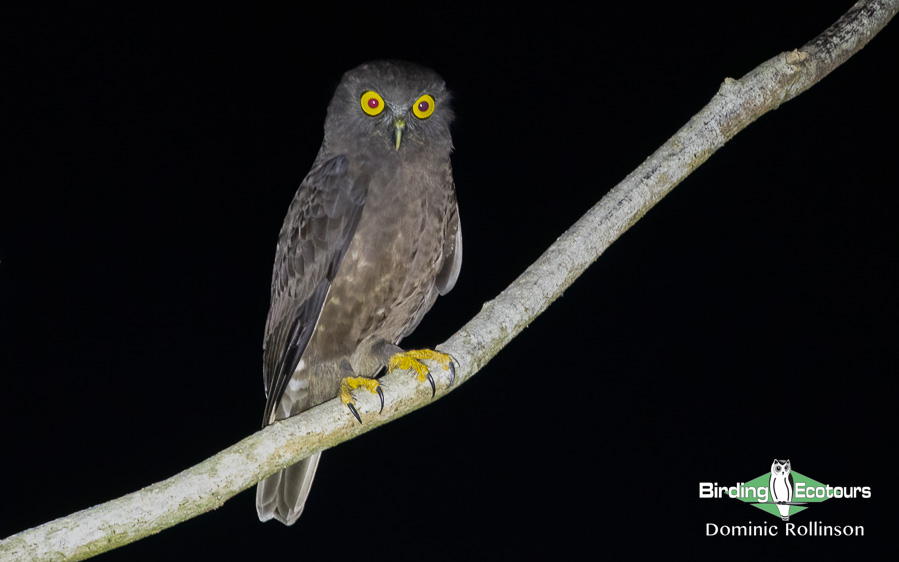
Please note that the itinerary cannot be guaranteed as it is only a rough guide and can be changed (usually slightly) due to factors such as availability of accommodation, updated information on the state of accommodation, roads, or birding sites, the discretion of the guides, and other factors. In addition, we sometimes have to use a different guide from the one advertised due to tour scheduling or other factors.
Download ItineraryBirding Tour India: Andaman Islands Endemics Set Departure Trip Report
08 – 12 FEBRUARY 2025
By Dominic Rollinson
DOWNLOAD TRIP REPORT
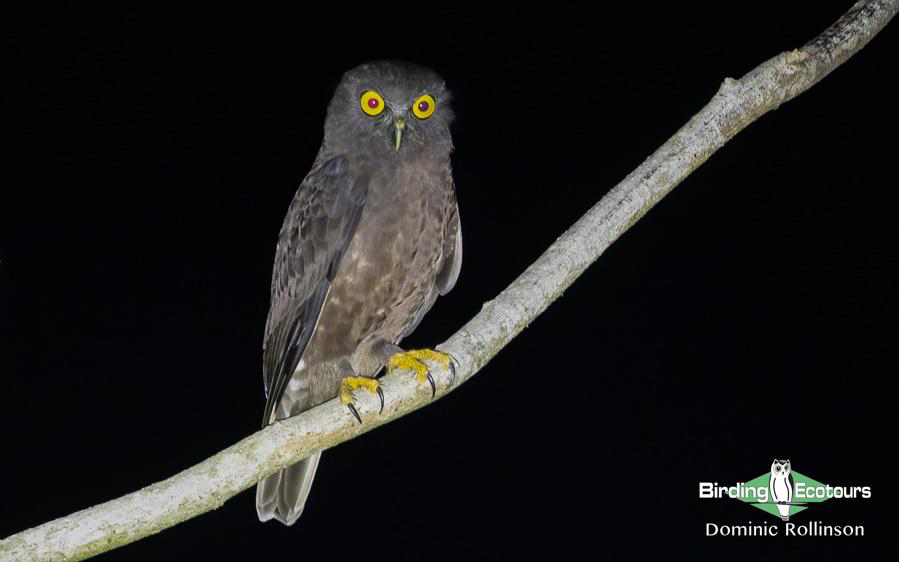
Hume’s Boobook was one of four endemic owl species we saw on this tour.
Overview
The Andaman and Nicobar Islands is an archipelago owned and governed by India, located at the merging of the Bay of Bengal and the Andaman Sea, approximately 170 miles (280 kilometers) southwest of Myanmar. The archipelago is comprised of around 570 islands and the territory is divided into three districts: Nicobar, South Andaman and Middle and North Andaman. On this tour we spent our entire time birding on South Andaman Island, where all of the Andaman bird endemics can be found.
Due to the archipelago’s geographical isolation it has meant several endemic bird species have evolved on the islands. Twenty Andaman endemics are currently recognized as occurring on the main Andaman Islands, with an additional nine endemics occurring on the Nicobar Islands and one other species (Narcondam Hornbill) occurring on a distant outer island. Unfortunately, visiting the Nicobar Islands is logistically tricky, with birders mostly being denied access in recent years, while Narcondam Island (for the hornbill) is entirely off limits to all tourists (both local and foreign). It was fun to chat to mainland Indian birders who regularly bird the islands to increase their Indian bird lists, with the added bonus of perhaps finding obscure vagrants which do not make it to mainland India.
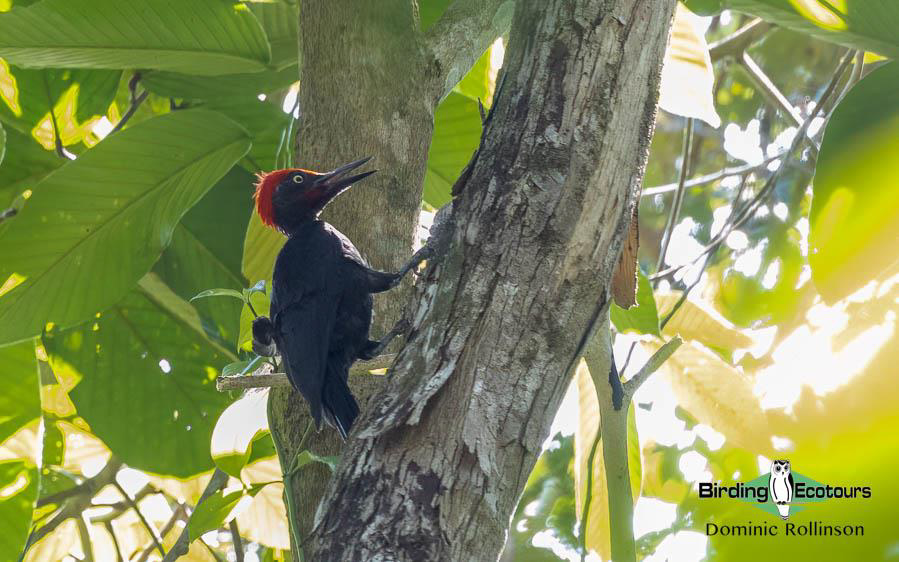
Andaman Woodpecker proved a real crowd pleaser!
This short birding tour was focused on finding all 20 Andaman Islands bird endemics occurring on South Andaman Island and our main goal was achieved. With four endemic owl species (and an endemic nightjar) to target, we went owling every evening, which meant the days were quite long. Despite this, we all thoroughly enjoyed our time here and managed several other exciting non-endemics which kept us entertained. Some of the more popular endemics included Andaman Woodpecker (voted bird of the trip), Andaman Cuckoo-Dove, Andaman Crake, Andaman Serpent Eagle, Andaman Masked Owl, Hume’s and Andaman Boobooks, Andaman Scops Owl, Andaman Treepie, and White-headed Starling. Some other popular endemic Andaman subspecies, which may be split at some point, included Oriental Scops Owl, Crested Serpent Eagle, Black Baza, Collared Kingfisher, and Greater Racket-tailed Drongo. We also enjoyed some fine wetland birding where we saw an interesting assortment of herons, rallids, terns and shorebirds.
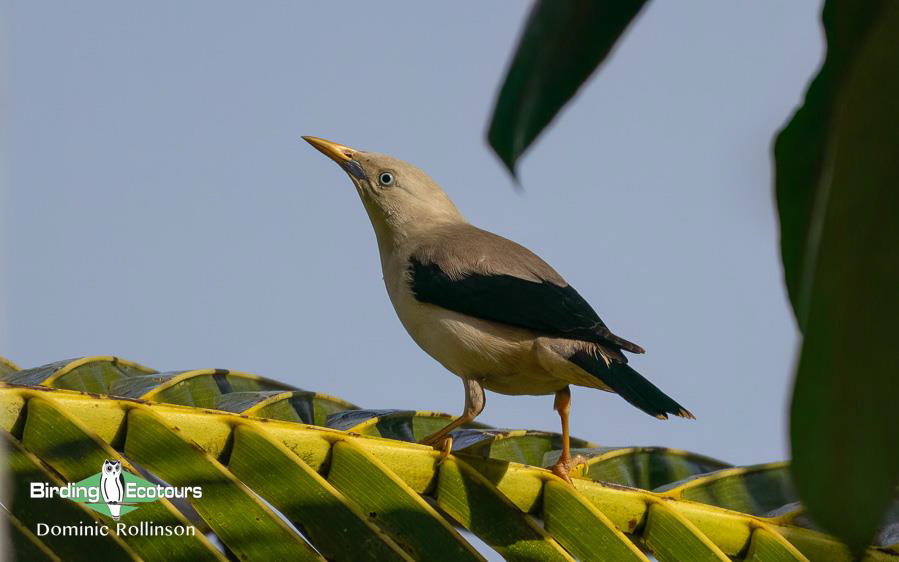
White-headed Starling, yet another Andaman Islands endemic.
A detailed daily account can be read below, with the full bird list located at the end of the report, and the eBird trip report, with additional photos, can be found here.
Detailed Report
Day 1, 8th February 2025. Arrival and Chidiyatapu Forest birding
Our entire group had arrived by around midday today (with Barbara, David, Tim, Kay and Yve having just completed a successful Sri Lanka birding tour, and Tim and Chuck having made their way here independently) into Port Blair, where we would be based for the next four nights. After unpacking our bags, we decided to head out and start ticking off the endemics. We met up with our expert local guide, who would be showing us around the island for the next few days, and made our way south to Chidiyatapu Forest, where we would be birding for the remainder of the afternoon.
Soon after entering Chidiyatapu Forest we found a bird party or two which quickly produced our first Andaman endemic in the form of Andaman Flowerpecker, as well as Green Imperial Pigeon, Red-whiskered Bulbul, Asian Glossy Starling, Alexandrine and Long-tailed Parakeets, Vernal Hanging Parrot, Scarlet Minivet, Black-naped Oriole, and Oriental Magpie-Robin. A little further around the corner we had good looks at the endemic subspecies of Crested Serpent Eagle, soon followed by an adult Andaman Serpent Eagle, which can be one of the trickier endemics to find! Overhead, Plume-toed Swiftlet and Brown-backed Needletails occasionally showed through the forest canopy, while Red Collared Dove showed lower down in the midstratum.
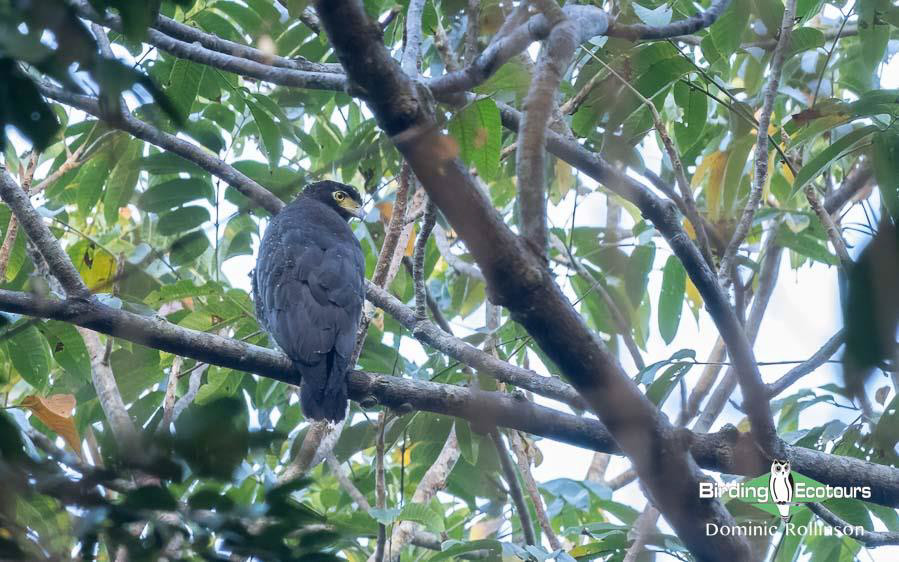
We were relieved to find Andaman Serpent Eagle on our first afternoon’s birding.
We then left the forest and enjoyed a cup of tea as we waited for the sun to set, to begin our first nocturnal birding session. The views out over the bay were beautiful and while we waited, we added White-bellied Sea Eagle, Oriental Dollarbird, Eurasian Whimbrel, Collared Kingfisher, and Greater Racket-tailed Drongo.
Once darkness had finally set in, we moved around the corner, where we found Hume’s Boobook without too much difficulty, while the calling Andaman Boobooks and Oriental Scops Owls would not show themselves for now. At a clearing in the forest, we had good looks at Andaman Nightjar and heard a few others calling in the distance. After a productive first afternoon and evening we headed back to our lovely hotel to enjoy dinner, before heading off to bed.
Day 2, 9th February 2025. Birding Kalatang and Chidiyatapu Forest
We left before dawn this morning (armed with breakfast packs) and caught the 6 am ferry across the bay. As we waited for the ferry, we enjoyed views of Pied Imperial Pigeons feeding in a nearby fruiting tree. We then spent most of the morning birding the forests of the Kalatang area. The birding was exceptional here and, right as we got out of the vehicles, we were called over to look at Andaman Cuckoo-Doves feeding in a fruiting tree, soon followed by Andaman Bulbul, Andaman Drongo, and Andaman Cuckooshrike. We then took a walk along a quiet forest track where the birding was even better and we further added Andaman Green Pigeon, Black Baza, Chestnut-headed Bee-eater, Freckle-breasted Woodpecker, Greater Racket-tailed Drongo, Andaman Treepie, Common Hill Myna, Asian Fairy-bluebird, and Grey Wagtail.
We heard some loud drumming, which could only come from one species, and rushed down the track to get brief looks at the large Andaman Woodpecker. We then enjoyed our breakfast packs, being distracted by Long-tailed Parakeet and Andaman Cuckooshrike, before taking another walk down the same track to have a proper go at Andaman Crake. We waited in place for a couple minutes and then, as hoped for, a single Andaman Crake slowly walked across the road and showed well for us.

Andaman Crake was seen as it walked across the road at Kalatang.
It had been a successful morning and so we loaded up the vehicles and made our way back to Port Blair, stopping in at a roadside wetland to tick off a huge flock of Andaman Teal, as well as Grey-headed Swamphen, Pacific Golden Plover, Common Snipe, and Osprey.
After lunch and a bit of time off back at our hotel, we headed back to Chidiyatapu Forest (enjoying good looks at Black Baza en route, for some) where we were hoping to find the tricky Andaman Wood Pigeon. Unfortunately, we did not have any luck this afternoon with the pigeon but did find Stork-billed Kingfisher, Freckle-breasted Woodpecker, Red-breasted Parakeet, Black-naped Monarch, and Forest Wagtail (which was well spotted by Yve).
We then moved to open grassland on the edge of some forest, which further yielded White-breasted Woodswallow, Brown Shrike, and Amur Stonechat. Once the sun had set, we then spent the next couple of hours working the forest patches for our missing owl species and managed to get great looks at Andaman Boobook, Andaman Scops Owl, and the endemic subspecies of Oriental Scops Owl (also known as “Walden’s Scops Owl”). A great end to another productive day out!
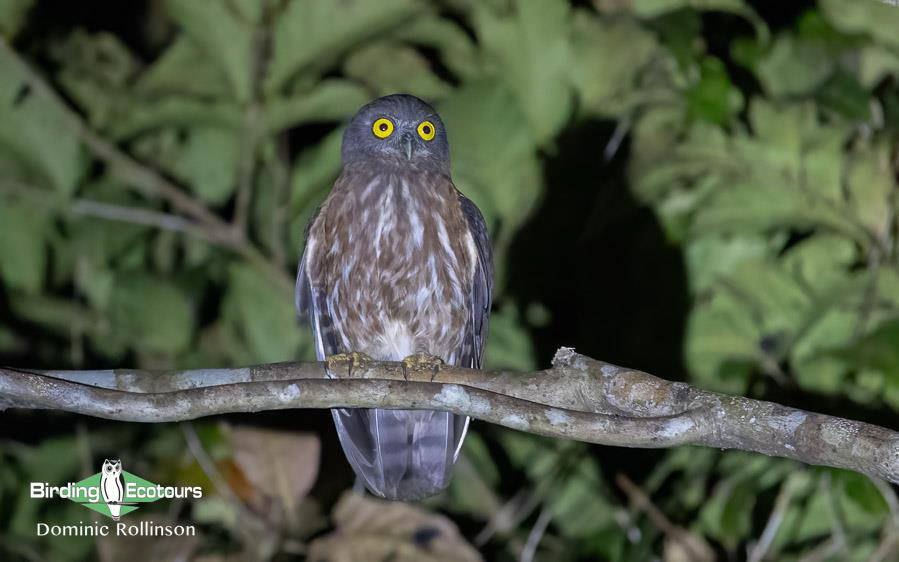
Andaman Boobook showed well on our second night of owling.
Day 3, 10th February 2025. Mount Manipur National Park and wetland birding
We again caught the 6 am ferry but this time headed a bit further north to Mount Manipur (formerly Mount Harriet) National Park which is at the southern end of a massive tract of primary forest which continues for many miles further north. While we were sorting out our entrance formalities, we spotted a small flock of White-headed Starlings which showed well for us. Over the next few hours we slowly birded the forests and forest edge of the national park, which produced all our targets and more.
Andaman Wood Pigeon was again our biggest target this morning (being about the toughest endemic to find). After some time, our local guide spotted some movement in the canopy, which turned out to be a couple Andaman Wood Pigeons and, after much repositioning, we all managed decent looks at them. General birding within the forest further added Common Emerald Dove, Andaman Green Pigeon, Asian Koel, Indian Cuckoo (again spotted by the eagle-eyed Yve), Oriental Cuckooshrike, Asian Fairy-bluebird, Asian Brown Flycatcher, and, after a lot of effort, Andaman Shama finally showed very well for us.
After lunch and some down-time, we headed out, but this time decided to bird some wetland areas near Port Blair. This proved extremely worthwhile and we added lots of birds to the trip list. The first small wetland that we visited had some fine waders/shorebirds (much to David’s delight) including Pacific Golden Plover, Pin-tailed and Common Snipes, Common, Wood, and Curlew Sandpipers, Common Redshank and Long-toed Stint. Nearby we enjoyed the likes of Pheasant-tailed Jacana, Cinnamon and Yellow Bitterns, Black-browed and Oriental Reed Warblers and a brief look at Watercock as it flew away. The grazed fields surrounding the wetlands had good numbers of Eastern Yellow Wagtails.
Next, we moved to some nearby mudflats which were even more productive, with lots of shorebirds around. Working through the shorebirds further added Tibetan Sand Plover, Eurasian Curlew, Bar-tailed Godwit, and Red-necked Stint, while we were entertained by Gull-billed, Whiskered, White-winged, and Little Terns, all feeding at close range.
Our final stop for the afternoon’s birding was a larger wetland which held Chinese Pond Heron, Lesser Whistling Duck, Andaman Teal, and many Grey-headed Swamphens, some with tiny chicks that they were feeding.

Andaman Teal were surprisingly numerous in the wetlands near Port Blair.
We still had one more endemic owl to find and thus arrived at the Andaman Masked Owl stakeout (outside of a teacher’s training college) and waited for the sun to set. Unfortunately, the owl was flushed early by another group of overzealous birders, which resulted in a flyby and some brief perched views – all a little chaotic. We were mostly satisfied with our views but decided we would head back again to try to improve our looks the following evening.
Day 4, 11th February 2025. Shoal Bay and more wetland birding
We were now familiar with the morning routine and boarded the 6 am ferry to cross the bay, this time adding a single Pacific Reef Heron as we waited. After the ferry ride, we made a longish journey north, as we wanted to reach Shoal Bay. En route to Shoal Bay we enjoyed looks at our final missing endemic, Andaman Coucal, which showed well despite the misty conditions.
We made a few birding stops en route, with one particularly birdy stop producing good looks at White-headed Starling, Freckle-breasted Woodpecker, and a very showy male Violet Cuckoo.
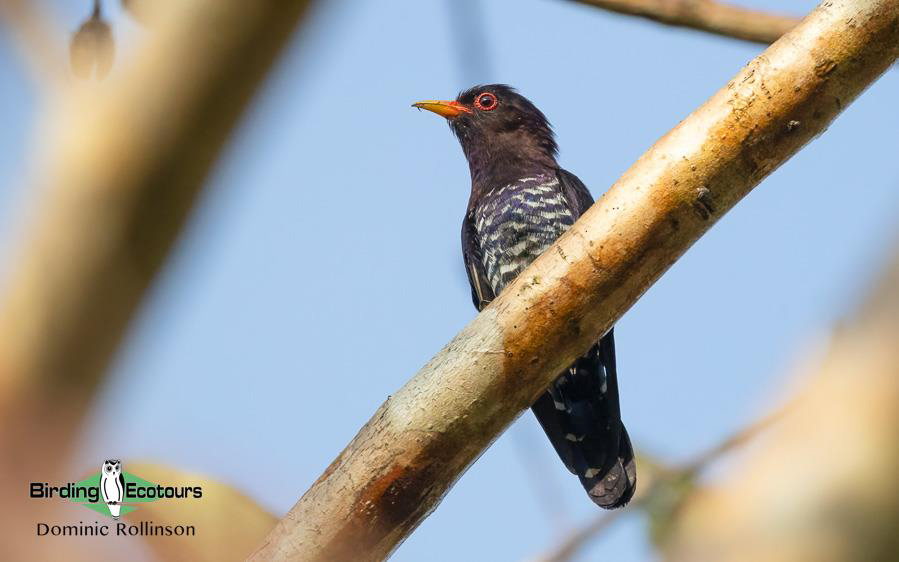
This handsome male Violet Cuckoo put on a show for us.
Arriving at the mangrove forest of Shoal Bay, our local guide soon spotted a Ruddy Kingfisher which showed incredibly well for us, along with Mangrove Whistler, Chestnut-headed Bee-eater and a trio of Phylloscopus warblers; Arctic, Dusky, and Greenish Warblers. We then made our way back through the primary forest, which yielded the hoped-for Andaman Woodpecker, of which we improved our views considerably. A Changeable Hawk-Eagle was another nice roadside addition.
For our final afternoon of birding we headed to a different section of the same wetlands as yesterday, this didn’t add too much different, but we did find Blue-tailed Bee-eater, Common, Stork-billed, White-throated, and Collared Kingfishers, Brown Shrike, another Dusky Warbler, and Asian Brown Flycatcher.
Some of us decided to have another go at the Andaman Masked Owl, with the other vehicle returning for an earlier dinner. We hit some really slow traffic on our way here but eventually arrived at the stakeout to find the Andaman Masked Owl waiting for us and providing some fine views. We eventually made it back to our hotel for a later dinner and said goodbye and a massive thank you to our excellent local guide.
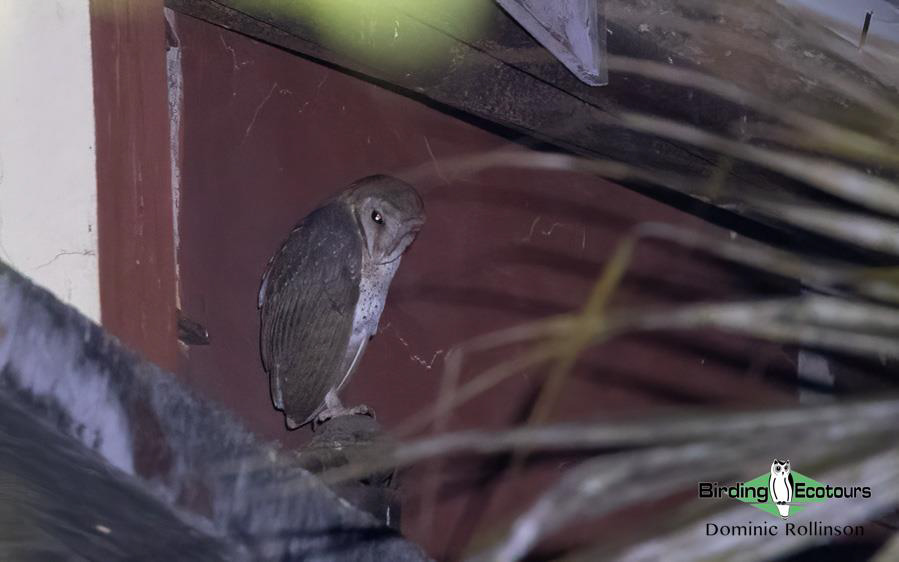
It took some work, but we eventually saw Andaman Masked Owl well.
Day 5, 12th February 2025. Departure from Port Blair
We did not have any scheduled birding this morning and so, after breakfast, during which Andaman Woodpecker was voted bird of the trip, with Hume’s Boobook a close second, we said our goodbyes and everybody caught transfers to the nearby airport. Thanks everybody for a most enjoyable and highly productive trip, and I look forward to birding with you all again soon.
Bird List – Following IOC (Version 15.1/February 2025)
The following notation after species names is used to show conservation status following BirdLife International: VU = Vulnerable.
| Common Name | Scientific Name |
| Ducks, Geese, Swans (Anatidae) | |
| Lesser Whistling Duck | Dendrocygna javanica |
| Andaman Teal | Anas albogularis |
| Nightjars (Caprimulgidae) | |
| Andaman Nightjar | Caprimulgus andamanicus |
| Swifts (Apodidae) | |
| Plume-toed Swiftlet | Collocalia affinis |
| Edible-nest Swiftlet | Aerodramus fuciphagus |
| Brown-backed Needletail | Hirundapus giganteus |
| Cuckoos (Cuculidae) | |
| Andaman Coucal | Centropus andamanensis |
| Asian Koel | Eudynamys scolopaceus |
| Violet Cuckoo | Chrysococcyx xanthorhynchus |
| Indian Cuckoo | Cuculus micropterus |
| Pigeons, Doves (Columbidae) | |
| Rock Dove [Feral Pigeon] | Columba livia [dom.] |
| Andaman Wood Pigeon | Columba palumboides |
| Red Collared Dove | Streptopelia tranquebarica |
| Andaman Cuckoo-Dove | Macropygia rufipennis |
| Common Emerald Dove | Chalcophaps indica |
| Andaman Green Pigeon | Treron chloropterus |
| Green Imperial Pigeon | Ducula aenea |
| Pied Imperial Pigeon | Ducula bicolor |
| Rails, Crakes & Coots (Rallidae) | |
| Common Moorhen | Gallinula chloropus |
| Grey-headed Swamphen | Porphyrio poliocephalus |
| Andaman Crake | Rallina canningi |
| Watercock | Gallicrex cinerea |
| White-breasted Waterhen | Amaurornis phoenicurus |
| Plovers (Charadriidae) | |
| Pacific Golden Plover | Pluvialis fulva |
| Tibetan Sand Plover | Anarhynchus atrifrons |
| Jacanas (Jacanidae) | |
| Pheasant-tailed Jacana | Hydrophasianus chirurgus |
| Sandpipers, Snipes (Scolopacidae) | |
| Eurasian Whimbrel | Numenius phaeopus |
| Eurasian Curlew | Numenius arquata |
| Pin-tailed Snipe | Gallinago stenura |
| Common Snipe | Gallinago gallinago |
| Common Sandpiper | Actitis hypoleucos |
| Wood Sandpiper | Tringa glareola |
| Common Redshank | Tringa totanus |
| Common Greenshank | Tringa nebularia |
| Curlew Sandpiper – VU | Calidris ferruginea |
| Long-toed Stint | Calidris subminuta |
| Red-necked Stint | Calidris ruficollis |
| Gulls, Terns, Skimmers (Laridae) | |
| Little Tern | Sternula albifrons |
| Gull-billed Tern | Gelochelidon nilotica |
| Whiskered Tern | Chlidonias hybrida |
| White-winged Tern | Chlidonias leucopterus |
| Herons, Bitterns (Ardeidae) | |
| Cinnamon Bittern | Botaurus cinnamomeus |
| Yellow Bittern | Botaurus sinensis |
| Pacific Reef Heron | Egretta sacra |
| Little Egret | Egretta garzetta |
| Little Heron | Butorides atricapilla |
| Chinese Pond Heron | Ardeola bacchus |
| Great Egret | Ardea alba |
| Medium Egret | Ardea intermedia |
| Eastern Cattle Egret | Ardea coromanda |
| Grey Heron | Ardea cinerea |
| Purple Heron | Ardea purpurea |
| Ospreys (Pandionidae) | |
| Osprey | Pandion haliaetus |
| Kites, Hawks, Eagles (Accipitridae) | |
| Black Baza | Aviceda leuphotes |
| Crested Serpent Eagle | Spilornis cheela |
| Andaman Serpent Eagle – VU | Spilornis elgini |
| Changeable Hawk-Eagle | Nisaetus cirrhatus |
| White-bellied Sea Eagle | Icthyophaga leucogaster |
| Barn Owls (Tytonidae) | |
| Andaman Masked Owl | Tyto deroepstorffi |
| Owls (Strigidae) | |
| Hume’s Boobook | Ninox obscura |
| Andaman Boobook | Ninox affinis |
| Andaman Scops Owl | Otus balli |
| Oriental Scops Owl | Otus sunia |
| Rollers (Coraciidae) | |
| Oriental Dollarbird | Eurystomus orientalis |
| Kingfishers (Alcedinidae) | |
| Stork-billed Kingfisher | Pelargopsis capensis |
| Ruddy Kingfisher | Halcyon coromanda |
| White-throated Kingfisher | Halcyon smyrnensis |
| Collared Kingfisher | Todiramphus chloris |
| Common Kingfisher | Alcedo atthis |
| Bee-eaters (Meropidae) | |
| Blue-tailed Bee-eater | Merops philippinus |
| Chestnut-headed Bee-eater | Merops leschenaulti |
| Woodpeckers (Picidae) | |
| Freckle-breasted Woodpecker | Dendrocopos analis |
| Andaman Woodpecker – VU | Dryocopus hodgei |
| Old World Parrots (Psittaculidae) | |
| Red-breasted Parakeet | Psittacula alexandri |
| Long-tailed Parakeet – VU | Psittacula longicauda |
| Alexandrine Parakeet | Psittacula eupatria |
| Vernal Hanging Parrot | Loriculus vernalis |
| Woodswallows, Butcherbirds & Allies (Artamidae) | |
| White-breasted Woodswallow | Artamus leucorynchus |
| Cuckooshrikes (Campephagidae) | |
| Small Minivet | Pericrocotus cinnamomeus |
| Scarlet Minivet | Pericrocotus speciosus |
| Oriental Cuckooshrike | Coracina javensis |
| Andaman Cuckooshrike | Coracina dobsoni |
| Whistlers & Allies (Pachycephalidae) | |
| Mangrove Whistler | Pachycephala cinerea |
| Figbirds, Old World Orioles, Piopios (Oriolidae) | |
| Black-hooded Oriole | Oriolus xanthornus |
| Black-naped Oriole | Oriolus chinensis |
| Drongos (Dicruridae) | |
| Greater Racket-tailed Drongo | Dicrurus paradiseus |
| Andaman Drongo | Dicrurus andamanensis |
| Monarchs (Monarchidae) | |
| Black-naped Monarch | Hypothymis azurea |
| Shrikes (Laniidae) | |
| Brown Shrike | Lanius cristatus |
| Crows, Jays (Corvidae) | |
| Andaman Treepie – VU | Dendrocitta bayleii |
| House Crow | Corvus splendens |
| Eastern Jungle Crow | Corvus levaillantii |
| Bulbuls (Pycnonotidae) | |
| Andaman Bulbul | Brachypodius fuscoflavescens |
| Red-whiskered Bulbul | Pycnonotus jocosus |
| Swallows, Martins (Hirundinidae) | |
| Barn Swallow | Hirundo rustica |
| Leaf Warblers (Phylloscopidae) | |
| Dusky Warbler | Phylloscopus fuscatus |
| Greenish Warbler | Phylloscopus trochiloides |
| Arctic Warbler | Phylloscopus borealis |
| Reed Warblers & Allies (Acrocephalidae) | |
| Oriental Reed Warbler | Acrocephalus orientalis |
| Black-browed Reed Warbler | Acrocephalus bistrigiceps |
| Fairy-bluebirds (Irenidae) | |
| Asian Fairy-bluebird | Irena puella |
| Starlings, Rhabdornises (Sturnidae) | |
| Asian Glossy Starling | Aplonis panayensis |
| Common Hill Myna | Gracula religiosa |
| Common Myna | Acridotheres tristis |
| White-headed Starling | Sturnia erythropygia |
| Chats, Old World Flycatchers (Muscicapidae) | |
| Oriental Magpie-Robin | Copsychus saularis |
| Andaman Shama | Copsychus albiventris |
| Asian Brown Flycatcher | Muscicapa dauurica |
| Amur Stonechat | Saxicola stejnegeri |
| Flowerpeckers (Dicaeidae) | |
| Andaman Flowerpecker | Dicaeum virescens |
| Sunbirds (Nectariniidae) | |
| Ornate Sunbird | Cinnyris ornatus |
| Old World Sparrows, Snowfinches (Passeridae) | |
| House Sparrow | Passer domesticus |
| Wagtails, Pipits (Motacillidae) | |
| Forest Wagtail | Dendronanthus indicus |
| Eastern Yellow Wagtail | Motacilla tschutschensis |
| Grey Wagtail | Motacilla cinerea |
| Total seen | 115 |
DOWNLOAD TRIP REPORT
Please email us ([email protected]) for more trip reports from this destination.
BIRDING TOUR INDIA: ANDAMAN ISLANDS ENDEMICS
TOUR-SPECIFIC INFORMATION
GENERAL INFORMATION ABOUT INDIA CAN BE READ HERE
TOUR OUTLINE
This short (five day) Andaman birdwatching tour will focus on the endemic birds found on the Andaman Islands, part of the Andaman and Nicobar Islands archipelago. We will be based on South Andaman Island during the tour. Currently, unfortunately, the Nicobar Islands are off limits to foreigners, but once they open we will extend this Andaman birding tour to include a Nicobar Island birding tour for a number of additional Nicobar Island endemic birds.
We will have one base on the tour, meaning a more relaxing tour and no unnecessary accommodation changes. The endemic birds found on the island will be our main targets, and will include Andaman Teal, Andaman Nightjar, Andaman Coucal, Andaman Wood Pigeon, Andaman Cuckoo-Dove, Andaman Green Pigeon, Andaman Crake, Andaman Serpent Eagle, Andaman Masked Owl, Andaman Scops Owl, Hume’s Boobook, Andaman Boobook, Andaman Woodpecker, Andaman Cuckooshrike, Andaman Drongo, Andaman Treepie, Andaman Bulbul, White-headed Starling, Andaman Shama, and Andaman Flowerpecker. The tour also provides opportunities for a range of more widespread species that have endemic subspecies on these islands, and which might, in the future, get elevated to full species status.
Should you with to extend your time in this part of the world, you could combine this Andaman Island birdwatching tour with some of our other tours in India or Sri Lanka. If you would like to extend your stay in the Andaman Islands, the islands also offer great snorkeling and scuba diving due to crystal-clear waters and great underwater visibility, where you can explore vibrant coral reefs, diverse marine life, and underwater ecosystems. We can happily arrange extra activities for you before or after your Andaman Islands birding tour, just mention this when you are booking the tour.
PASSPORT, VISA, LOCAL LAWS, CULTURAL DIFFERENCES, AND CUSTOMS
In addition to the regular Indian entry requirements described in the India general information document, for this Andaman birding tour you will require a Restricted Area Permit (RAP). The Andaman Islands are a restricted area and all foreign nationals need a permit to visit. This permit is usually issued upon arrival at Port Blair Airport and is typically valid for 30 days. Please carefully read through the information provided in the permit for a full list of what is and isn’t allowed (the permit states lots of what could be termed “common sense” rules, a couple of the main ones are mentioned below), and please feel free to ask our knowledgeable local guides if you require any clarifications when you meet them. The situation regarding the Restricted Area Permit (RAP) has been somewhat fluid. At present (September 2024), obtaining the RAP is more of a formality with nothing needing to be done prior to arrival. Upon your arrival at Port Blair airport, officials may ask you some questions regarding your stay and the places you intend to visit (this information will be emailed to you with your tour information documents ahead of departure). Immigration staff at the airport will then issue you with the RAP.
One of the most important rules in the RAP is that you don’t interact with indigenous tribes. Certain indigenous tribes, like the Jarwa and Sentinelese found in the more remote areas, are protected by law. Any interaction, photography (even from a moving vehicle), or even attempting to visit areas inhabited by these tribes is strictly prohibited and illegal. The RAP specifies this, and other rules that must be abided by foreigners while visiting. If you ignore these rules you could find yourself in serious trouble and the situation would be out of our control. It might also have implications for other people in the tour group, our tour leader, and local guides, so please ensure you follow to the letter all rules and instructions given.
DAILY ACTIVITIES, PHYSICAL REQUIREMENTS, AND TOUR PACE
Our Andaman bird tour focusses on finding as many of the currently recognized International Ornithological Committee (IOC) endemic bird species, as well as those with a high potential to get elevated to endemic species status in the future. We also pay attention to what other taxonomic groups are doing (e.g. Handbook to the Birds of the World Alive (HBW Alive)/BirdLife International and Clements/eBird) in the region, as these may also become future IOC splits. Our aim is to give you the best value possible from the tour, which might include future armchair ticks, which everyone likes!
Our days will likely include early morning birding sessions (e.g. 05:00 – 11:00 hrs.), a break during the heat of the middle of the day (11:00 – 14:30/15:00 hrs.), followed by an afternoon and evening birding session (14:30/15:00 – 18:00 hrs.). There are several endemic nightbirds to go after in the Andaman Islands and on some evenings in the tour we will focus on these. Luckily, it is dark relatively early, so owling sessions can hopefully be completed by 20:00 hrs., but will continue as long as necessary (and we do have a few nights available for owling if required). It is likely that on the nights we do owling, we might have a later dinner to allow us to focus on the owls at the prime time for potential sightings.
Our birding will take us to pristine forest, where we will likely spend the majority of our time. We will bird at Chidyatapu Biological Park and Mount Harriet National Park, where the vast majority of our endemic target birds occur. We will also be sure to visit other habitats, such as the Sippighat (swamps and saltmarsh), North Wandoor, and other locations, where we will check waterbodies, swamps, mangrove forests, and mudflats for a wide assortment of exciting birds. Our birding activities will primarily be conducted on roads, trails, and forest tracks with varying terrain. The walks will range from easy, short strolls to slightly more moderate hikes, especially around areas like Mount Harriet. Although there is some elevation gain at Mount Harriet, where we might be birding up to around 1,200 feet (365 meters altitude), it is considered quite manageable. The peak of the mountain is 1,578 feet (481 meters).
HEALTH, VACCINATIONS, AND PESTS
The requirements for visiting the Andaman and Nicobar Islands currently (September 2024) appear to be the same as those required for entering India. Please refer to the details provided in the “Health, Vaccinations, and Pests” section of the India general information document for full recommendations. A great source of data is the “Travel Health Pro” website and information specific to the Andaman and Nicobar Islands can be seen here. Please also refer to the information on traveling to India/the Andaman Islands provided by your own government.
There is a low risk of Malaria in the Andaman and Nicobar Islands. Awareness of risk and bite avoidance is recommended, but, as for all medical scenarios, we recommend consulting your doctor or travel clinic to seek their professional advice, this information is just a guide.
The chances of leech encounters is considered low due to our Andaman bird tour occurring in the dry season, however it is always best to carry some salt or leech socks as a precaution in case of unseasonable wet weather occurring in the lead up to, or during, our tour!
FOOD, DRINKS, AND MEALS
The food in the Andaman Islands pulls on inspiration from across India and the wider region. The Andamans are a paradise for seafood lovers, as the staple food includes rice, coconut, and lots of freshly harvested seafood from the oceans of the Bay of Bengal. The Andaman Islands are home to a wide variety of cuisine, with South India, Bengali, and Andhra influence. Some top food on the Andaman Islands include fish curry, macher jhol, chicken tikka masala, coconut prawn curry, barbequed (grilled) food, tandoori fish, grilled lobsters, squid fry, khadi crabs, and Amritsar kulcha (stuffed Indian bread).
Despite all of the delicious fish/seafood (and chicken) dishes on offer, it is possible to get vegetarian and vegan meals. Please do let us know of any allergies or dietary preferences as soon as possible (e.g. on your booking form), so we can accurately pass this information on to our team on the ground in advance. If you are unsure about the quintessential Indian cuisine, then you must try Indian ‘Thali food’, which is more like a cultural exploration, and makes for a complete meal itself. This traditional feast makes for the perfect assortment of delicious regional dishes on a single platter. Every region has its own take on thali too, so there’s always something different and interesting to try. Typically for the region, rice is the staple food in the Andaman Islands, with the addition of delicious breads like roti and naan as supplements. For vegans a chili curry is apparently a “must-try” dish, but only for spice-lovers!
There are usually western food options available for breakfast, consisting of familiar foods such as eggs, fruit, toast, and jam, as well as more local fare.
Please note that some meals may be taken “in the field” while out birding, and others may be taken in restaurants (so we may have boxed breakfasts and/or boxed lunches on some occasions). On some evenings our meals might be a bit later to allow us to spend the required time owling, so we can search for the region’s endemic nightbirds. If you require food/meals at a specific time (e.g. to coincide with taking of medication), we suggest you bring a supply of snacks, such as cereal/protein bars, as supplementary food options since meal times cannot be guaranteed to be regular during the tour.
ACCOMMODATION
The duration of our stay on the Andaman Islands will be spent at a comfortable hotel in Port Blair (hotel details and weblink will be provided in the final itinerary we send you). The hotel’s location is convenient for the airport, but also great for getting to and from the birding sites we will visit. The accommodation provides an enjoyable place to rest and refresh after time birding in the field, where it will be hot and humid. Our hotel features contemporary interiors and excellent service and all of the facilities one would expect from such a place. All rooms come with a desk, television, and private bathroom fitted with a shower (and free toiletries!), and all have air conditioning. Wi-Fi is available. The hotel has a restaurant, bar, room service, laundry service, and a fitness center.
ELECTRICITY
Power outages can occur in the Andaman and Nicobar Islands, more so on the remote islands than where we will be based during this Andaman birdwatching tour (on South Andaman Island), but it doesn’t hurt to be prepared for the worst-case scenario. We therefore suggest having a portable charging device (e.g. a power bank) to keep your phone etc. charged should a power cut happen (a flashlight/torch can also be helpful in this situation). Just make sure your power bank meets current airline regulations for travel and this should be packed in your hand (carry on) luggage, not your hold luggage.
COMMUNICATIONS
Airtel or Jio sim cards should work in Port Blair but there may not be signal (or only limited signal) in some of the areas we will be birding, so we advise you download whatever you might require as “available offline” (e.g. maps, travel guides, Merlin, etc.), before you arrive. Our accommodation in Port Blair, where we will be based for the four nights of the Andaman bird tour, has Wi-Fi.
TRANSPORTATION
On this Andaman birding tour we will be getting around in air-conditioned large cars, due to restrictions on busses/vans in some areas. We will also likely take a brief vehicle ferry ride a couple of times to move between Port Blair and northern birding sites (such as for birding at Mount Harriet), this will save time on longer and potentially more congested road routes.
The key Andaman birding sites we will visit are easily accessible from Port Blair, so we won’t spend excessive time in vehicles, most sites will be between 30-60 minutes’ drive from our accommodation base in Port Blair.
WEATHER/CLIMATE
The Andaman Islands have a tropical climate. The best time for birdwatching in the Andaman Islands is from October to April, when the weather is cooler and drier. The monsoon season (May to September) can bring heavy rains, making some areas difficult to access. Our Andaman birdwatching tour takes place in January or February, expect average temperatures of around 88oF (31oC) during the day and 72oF (22oC) at night at this time of the year. January and February are usually the drier months of the year, however, with the humidity levels, it will still feel muggy. We will likely have around 12 hours of daylight each day during the tour, with sunrise around 05:30/06:00 hrs. and sunset around 17:30/18:00 hrs. (which is usefully early, given we will have to spend time looking for owls at night).
CURRENCY, MONEY, AND TIPPING
As for the rest of India, the Indian Rupee (INR) is the official currency in the Andaman and Nicobar Islands. ATMs are available in Port Blair (where we will be based for the duration of the tour), they may be infrequent away from the city, but this shouldn’t pose a problem on this tour. We would always recommend getting cash in India at your earliest convenience, so possibly at your airport of international entry, such as New Delhi, Mumbai, Chennai etc. It’s not uncommon for ATMs to be down or run out of cash, so getting in early can be good. Small denomination notes are useful for tipping (please refer to the “Tipping” section of the India general information document for an outline of tipping).
The tour went exactly as promised. Dominic Rollinson was outstanding and our local guide and drivers were great as well. I heartily recommend this tour to other birders, particularly to listers like myself.

